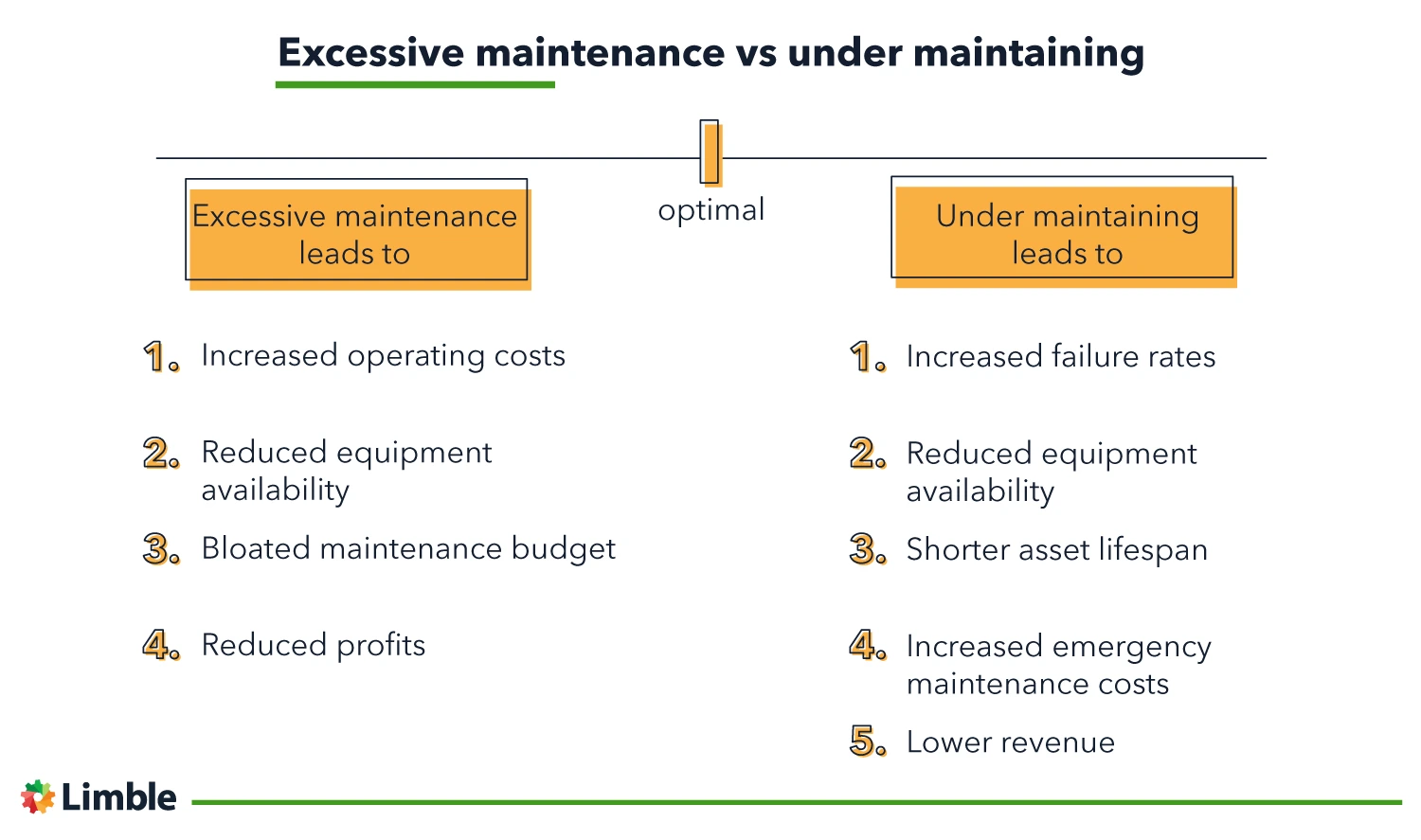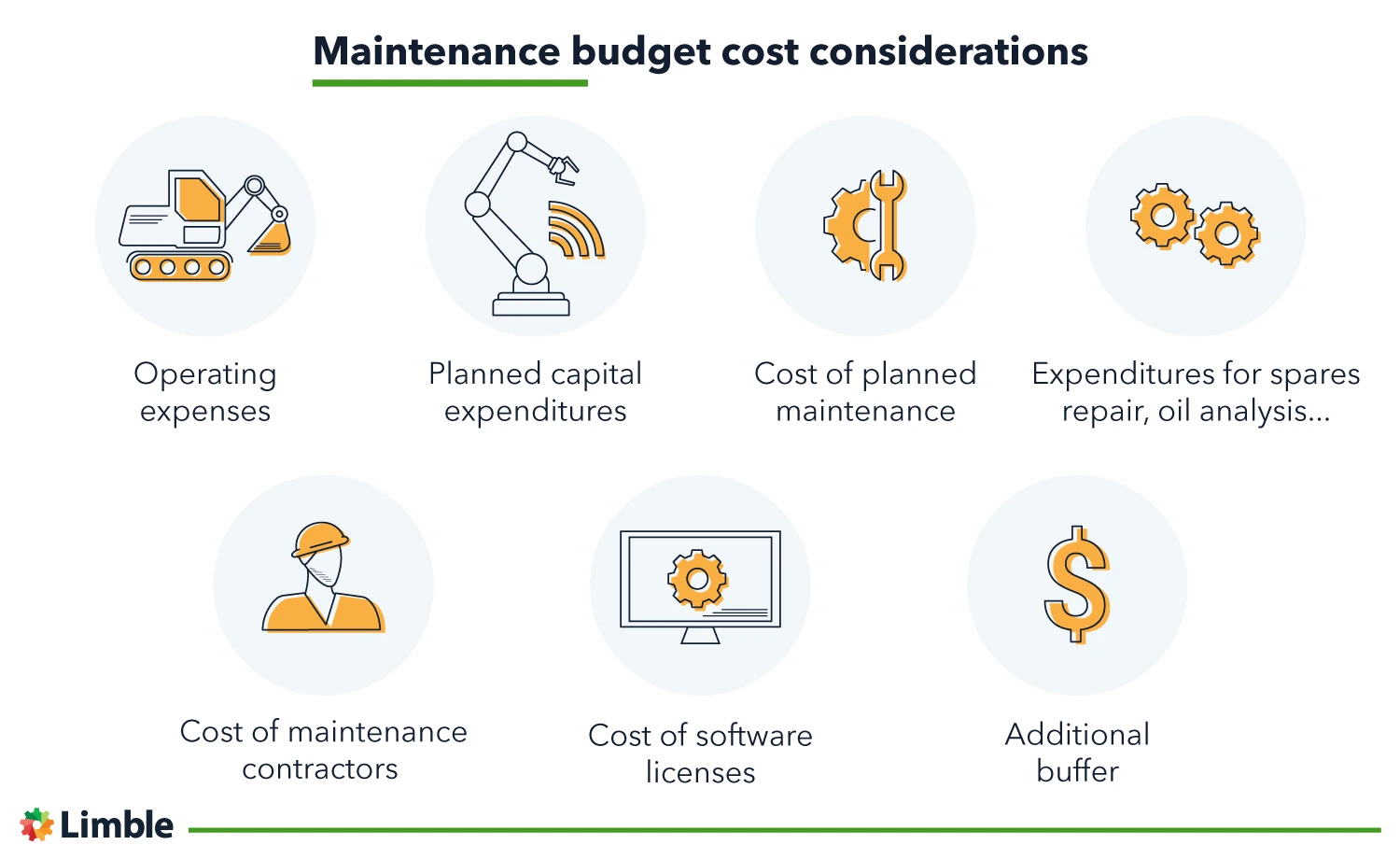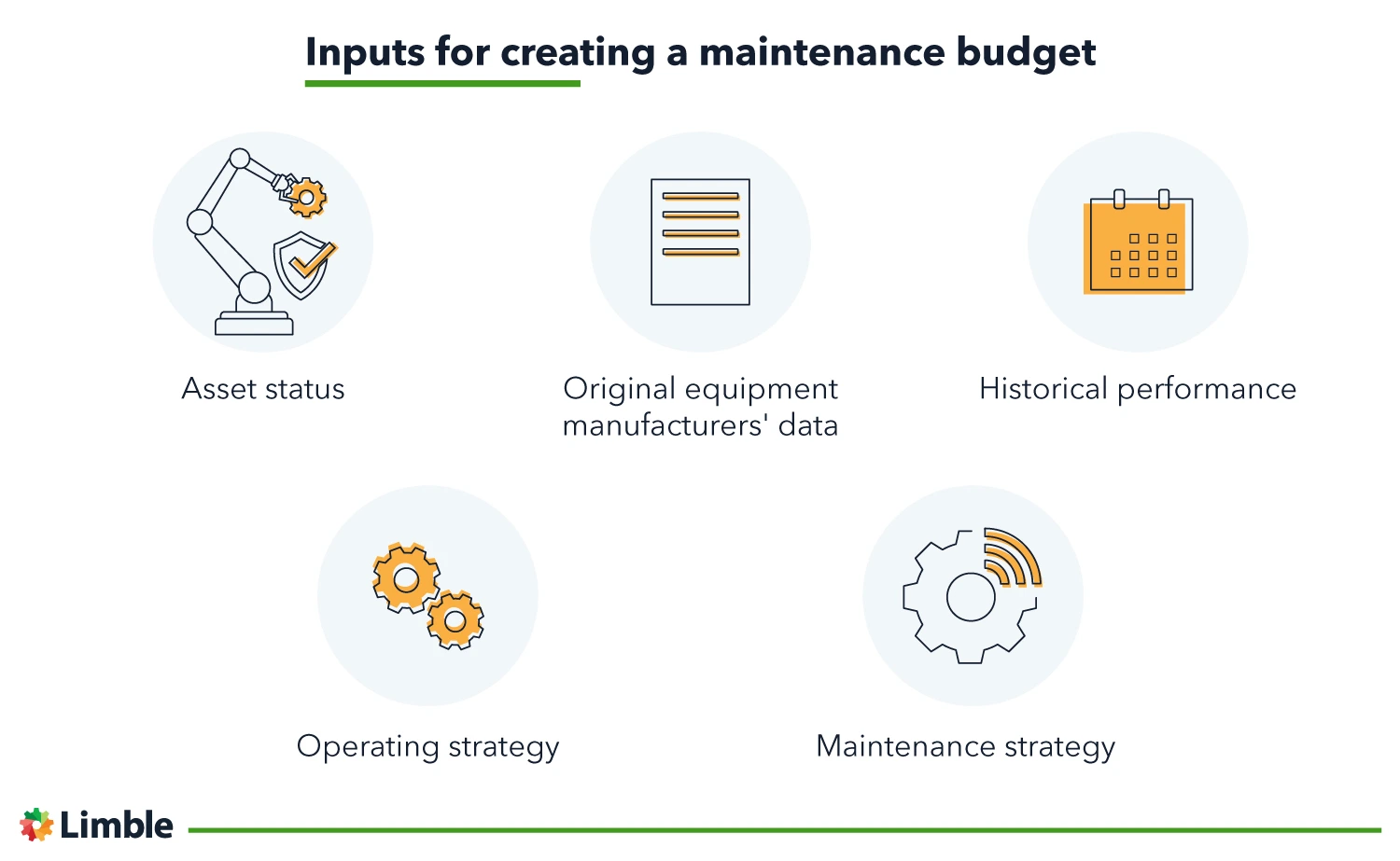Smart businesses understand that maintenance can be an enabler of business success and growth rather than just a source of inevitable costs. To be effective, your maintenance budget cannot be an arbitrary number based on revenue. Instead, you need to link maintenance expenditures to desired business outcomes.
By understanding the trade-off between asset life and revenue, a business can target maintenance investments to optimize equipment uptime and longevity, maximize revenue, and delay capital expenditure.
In other words, maintenance budgeting is a balancing act. Let’s see how to walk that line.
Mastering maintenance budgeting
Budgeting is a fundamental requirement in business. While never a perfect exercise, it allows business departments to identify their annual goals, allocate expenditure to achieve those goals, and keep evaluating performance against the plan. The maintenance department is not an exception.
We understand that all equipment and assets deteriorate, wear, and fail. Knowing that failure is inevitable, we can select from a range of maintenance strategies for each asset, depending on its criticality to the business.
For example, if an asset is super-critical, with high impact and cost implications, we might invest into predictive maintenance to avert failure. When the impact of the failure is negligible, or the item is cheap, we might replace it only when it stops.
Under maintaining vs excessive maintenance
If we get our budget decisions wrong, we may end up under-maintaining our assets. This increases failure rates, reduces equipment availability, lowers revenue, shortens asset lifespan, increases emergency maintenance costs, and increases capital expenditure.
When we over-maintain an asset, we spend more than necessary on maintenance, basically wasting money. We artificially inflate our maintenance budget, reduce business profit, and our frequent maintenance interventions can even reduce equipment availability.
An iterative process
The delicate balance requires maintenance budgeting to be an iterative process. Beginning with a budget estimate, you regularly refine your budgeting allocations based on in-service experience, changes in operating cycles, or the addition of new equipment.
The goal is to maximize the useful life of an asset, as well as equipment uptime, while minimizing maintenance expenditure as a percentage of operating costs.
Your maintenance budget becomes the baseline from which you can make incremental changes, capturing and analyzing operational performance and measuring the return on your investment.
When used effectively, your maintenance budget is the lever you can use to fine-tune your plant’s profitability. You reduce costs and add a further margin to operating profit.
The Essential Guide to CMMS
The Essential Guide to CMMS

The scope of a standard maintenance budget
The scope of a maintenance budget differs by business model.
Managing a warehouse means you may outsource much of your maintenance to contractors and tradespeople. In this case, your maintenance budgeting is simpler as it is predominantly contract-based. When you have a production plant running 24-hours a day, the scope of your budget is considerably larger and more complex, requiring maintenance software to manage things efficiently.
Because of those differences, we can’t give you an exact template. However, we can outline considerations that are a part of most maintenance budgets.
Your maintenance budget should cover all operating expenses needed to operate your maintenance department and deliver the required equipment or asset availability to support the business plan. It should capture the planned capital expenditure for replacing assets and tooling, making equipment modifications, and for special projects.
You will need to capture all planned maintenance tasks and their costs. These costs will include labor costs, spares, tooling, consumables, and any contractors used. On top of that, you should have some contingency for emergency rectifications and after-hours responses.
Last but not least, there might be additional costs from management software licenses, spares repair, oil analysis, or trend analysis – these should all be captured while planning your annual maintenance budget.
A common mistake is to focus solely on the cost of maintenance tasks. However, as you can clearly see, the maintenance budget encompasses much more than that.
Inputs for creating a maintenance budget
When creating a maintenance budget for the first time, there are five inputs you need to take into account:
- Asset status
- Original equipment manufacturers’ data
- Historical performance
- Operating strategy
- Maintenance strategy
These inputs will provide data to estimate technician numbers, resource allocation, tooling requirements, spare strategies, and financial expenditure. Here are some considerations for each.
1) Asset status
At what stage in their lifecycle are each of your assets? If new, you’ll have warranties and guarantees crucial for reducing your maintenance costs in the first few years. Make sure you understand what is covered and what isn’t, and plan only for the events that are your responsibility.
If the asset is nearing the end of its useful life, you’ll need to consider the potential for increased maintenance costs, emergency callouts, catastrophic failure, and extended downtime.
Similarly, the business might have plans to replace old equipment. In this scenario, you will have to account for the costs of installing and commissioning the new machine, as well as any training and new tooling costs.
2) Original equipment manufacturers’ (OEM) data
Information provided by the OEM forms the core of your budgeting process. They will recommend servicing intervals, tasks you should complete at each interval, and the necessary consumables and tools. They can also advise on the in-service experience of other operators, mean time between failures (MTBF) for critical components, and recommended spare parts holdings.
If the equipment and your budget are brand new, you have little option but to follow OEM recommendations, if only for warranty purposes. However, if the equipment is old, the value of the OEM advice will diminish. At that point, your in-house maintenance knowledge will better apply to your operation.
Take a pump as an example. If you have a high-pressure pump, the OEM may suggest quarterly inspections. If the inspection takes one technician two hours and requires new seals, gaskets, and grease, those four annual inspections are easy to cost and put into your maintenance budget. You can schedule planned shutdowns and make sure you have the necessary tools and parts on hand.
However, if the pump is critical to the operation and experiences infrequent use followed by intensive periods of high-pressure cycling, you may choose to increase inspection frequencies from once every quarter to once every month. You might also keep a complete pump assembly in stock should failure occur during production runs.
The budget implications of the two scenarios are very different. You should decide on a logical strategy for your operation. Capture the costs and record the reasons for your decision to support future audit and analysis.
3) Historical performance
While OEM data is invaluable, it aggregates all operator experiences making it a generic guide. Your business will have operating characteristics that create specific challenges for your equipment. You might be operating with no equipment redundancy, making the item critical; you could also operate with several layers of redundancy, allowing ample time for repair.
When using historical performance to inform your allocation of funds, don’t blindly accept that this is the way it must be don every year. If you regularly see lower than expected MTBF of critical parts and machines, you would be remiss not to cost your next 12-months inspections and additional spares. You may also wish to spend additional resources to understand the root cause of premature failure and trial some strategies for improvement.
However, you must also be alert to changes. Continuing our pump example, if production rates increase by 20%, the maintenance requirements will also change. Blindly using last year’s costs or factoring them by a percentage leaves you unable to defend your budget – if challenged.
Based on the changes, assume you will need more frequent inspections and higher stock holdings. Document these costs and the assumptions behind them.
4) Operating strategy
Maintenance exists to help the business achieve its production goals. Therefore, maintenance involvement in the production planning process is essential for ensuring adequate downtime for planned maintenance. If the operating strategy increases production by 25%, it would be unwise to assume that maintenance costs will not change relative to the increased stress on the equipment.
Similarly, if production plans only allow weekend or night maintenance, your resource costs may increase due to penalty rates. An intensive and ongoing production run may require increased spare holdings and larger standby crews to allow rapid intervention and rectification, preventing extended downtime. Staffing may need to increase to ensure the increase in corrective maintenance does not detract from important preventative tasks.
Don’t forget to capture savings where possible. If production is forecasting greater downtime between product changes, changing out our pump for the spare during downtime allows a more leisurely benchtop inspection and overhaul. You can expect a reduction in emergency and penalty rates.
5) Maintenance strategy
Each asset has the potential to fail in several ways. When you consider the number of assets in an organization, the possibility for failure on any one day is significant.
When devising a maintenance strategy, you need to understand the effects of failure in each piece of equipment. Only then can you devise methods to prevent identified failure modes – or have a plan in place to quickly address failure when it happens.
Your selection of appropriate tactics will depend on equipment criticality and the failure effects. Until you have a comprehensive understanding of the strategies and interventions applicable to each asset, it’s impossible to accurately calculate the cost of your maintenance actions.
Pulling it all together
The data you have collected from the five inputs can seem complex and bewildering. A few decades ago, the next step would have been to open a spreadsheet, capture every item of maintained equipment, create 365 columns, and begin entering “to do” tasks for each asset, noting the spares, resources, and time required.
Today, technology makes life easy by automating the process within a computerized maintenance management system (CMMS). By creating asset cards within the system, you can apply multiple preventative maintenance tasks to each asset, including task frequencies, the time they take, and all the resources required to complete them effectively.
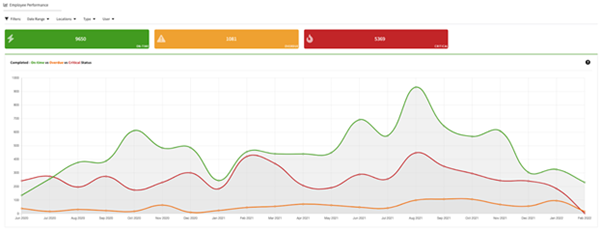
Limble CMMS employee performance report – one of many useful reports you can generate for easier budgeting
All workforce requirements, tooling, spares, consumables, and task times are loaded, connecting to other business systems to calculate costs for each task. The CMMS also links to your inventory system to allow tracking and optimization of spare parts usage and easy forecasting. Once a CMMS is fully loaded, a large part of your maintenance budget is done for you, providing a projection of costs for the coming year.
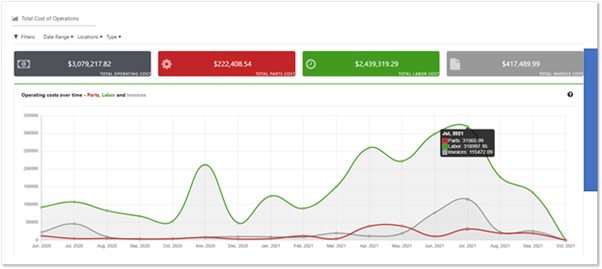
Total cost of operations in Limble CMMS – another useful report that is automatically generated cost tracking and budgeting
To provide a rounded budget, you must take those known costs and include an allowance for the unknowns. Unexpected failures are the perfect example. They are unpredictable (by definition) and often attract penalty rates and emergency costs. Keep these contingency costs in mind when finalizing your maintenance budget.
You need accurate data to prepare precise maintenance budgets
A strong maintenance budget documents assumptions that clearly articulate the link between maintenance strategies, costs, and the resulting equipment reliability and availability. Some of the strategies will be wrong in hindsight, but if the budget is based on informed assumptions, it becomes harder to challenge.
CMMS software helps you automate a large part of your maintenance planning and tracking. However, what often goes under the radar is its ability to generate, store, and report a huge volume of maintenance data – data you can use to make informed decisions, budgeting or otherwise.
If you are interested in learning more about Limble CMMS and its ability to estimate, track, and control your maintenance expenditures, do not hesitate to reach out or request a personal walkthrough.
